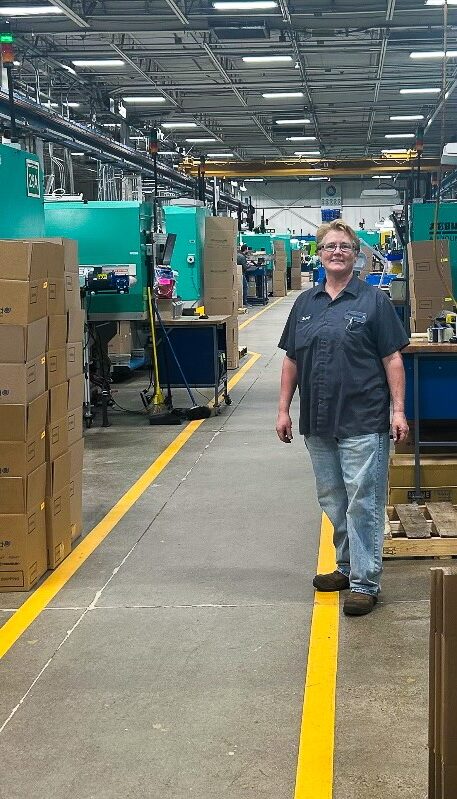The automotive industry affects so many things. Americans spent 47 minutes per day on travel in 2020. Most of these minutes were spent inside cars.
Owning a car is a part of many people’s lives. Yet that doesn’t mean the automotive industry is necessarily stro$162 billionng.
How many people work in the industry? How much money do they earn, and how many cars do Americans buy? How has the industry held up during the pandemic?
Answer these questions and you can make an informed decision about when to buy your car. Here is your quick guide.
Employment
The automotive industry has always been a major employer in the United States. Though many industry leaders have spoken about automation, very few of them have put automation into practice. This means that thousands of Americans remain employed in automotive factories.
The Bureau of Labor Statistics provides the latest statistics for the industry. They adjust employment numbers per season and they publish unadjusted rates. They do this because demand can fluctuate, especially during the holiday season when people want cars.
The seasonally adjusted employment rates for September 2021 suggest a strong industry. 906,600 Americans worked in car manufacturing. Almost two million Americans worked in motor vehicle and parts dealerships.
The non-adjusted numbers were slightly higher. 911,600 Americans worked in manufacturing, while just shy of two million Americans worked in dealerships.
The automotive industry has held up through the pandemic. All parts of the industry have higher rates of employment than the annual average in 2020. Vehicle ownership remains in high demand, so plenty of people will remain employed.
The industry is strong in other countries. Small businesses like OZZYTYRES employ many workers, including through the multiplier effect.
Hourly Earnings
The Bureau of Labor Statistics also provides the numbers for hourly earnings. Some people in the industry do earn annual wages, but most people in factories get paid per hour.
The majority of the most recent figures are for August 2021. The Bureau does not provide seasonally-adjusted statistics for hourly earnings.
The only figure from September 2021 is for manufacturers. Employees earned an average of $25.11 per hour that month.
People who sold cars wholesale earned an average of $24.49 per hour in August 2021. Automotive dealers earned $26.28 per hour, while automotive repair professionals earned $21.27.
Most automotive employees work more than 40 hours a week. This means that they can earn more than $1,000 per week.
Electric Vehicles
Electric vehicles are rising in prominence. Car ownership can have a major impact on the environment. Using electricity instead of oil can significantly reduce the carbon footprint of a first-time car buyer.
Countries around the world are expressing a tremendous interest in electric cars. The global market was worth $162 billion in 2019. As of now, there are roughly 1.6 million electric cars on the road.
The industry is expected to grow to $802 billion by 2027. 18.7 million vehicles will be in operation.
This may seem like a small number, and it is. Automotive care for electric vehicles requires a lot of resources, which deters many lower-income people from buying one.
Vehicle Production
The Bureau of Transportation Statistics provides the latest facts about vehicle production. In 2019, American manufacturers produced nearly 11 million vehicles. The pandemic did cause a downturn, with only 8.8 million vehicles made in 2020.
Many of the vehicles that were made were commercial ones. Commercial vehicles include pickup trucks, minivans, and SUVs. Almost 6.9 million commercial vehicles rolled out of factories in 2020.
That means that manufacturers made over 1.9 million passenger cars. In 2013, manufacturers made more than 4.3 million cars. The significant decrease suggests that more people are buying vans and used cars instead of new vehicles.
Domestic Sales
Domestic sales figures also suggest the prominence of used cars. Before the pandemic, rates were high. More than 13.6 million vehicles traded hands in 2019.
That number dropped to 11.6 million in 2020. The pandemic encouraged people to save more money, so they put off buying a car. Americans bought 2.6 million passenger cars and nine million commercial vehicles in 2020.
The Bureau of Transportation Statistics combines the sales of American, Canadian, and Mexican cars together. This makes it hard to determine how many American-made cars were sold. It is also hard to tell how many Americans bought new cars.
Cost of Car Ownership
Several figures go into the cost of car ownership. The cost of buying the car in and of itself is a major one. But the costs of maintenance, insurance, and gas also contribute to the figure.
The Bureau of Labor Statistics estimates that the average American spends $4,394 on buying a car. Buying gasoline and motor oil costs $2,094, and a person spends an additional $4,254 on maintenance and other costs. In total, the cost of car ownership is $10,742 per year.
You can also look at the cost in terms of vehicles and miles driven. The American Automobile Association provides figures for both.
Driving a 2019 small sedan for 10,000 miles per year costs 60.6 cents per mile. A medium sedan costs 74.9 cents per mile, while a large sedan costs 90 cents per mile.
If you drive your car for a longer period, the cost per mile drops. Driving a 2019 small sedan for 15,000 miles per year means it costs 47.4 cents per mile. Yet driving an additional distance may make your long-term insurance and maintenance expenses more significant.
The Latest Facts About the Automotive Industry
The automotive industry is hanging in there. Nearly three million Americans work inside the industry. Most of them work in dealerships, including in small stores.
They earn good wages, usually around $25 per hour. Electric vehicles will explode in prominence over the next few years, opening the door for more companies to start.
But vehicle production rates are dropping. The pandemic is affecting sales rates, including for commercial vehicles. The cost of ownership is significant, which may deter some potential buyers.
The industry is changing, and you deserve the latest facts. Keep up with cars by following our coverage.











